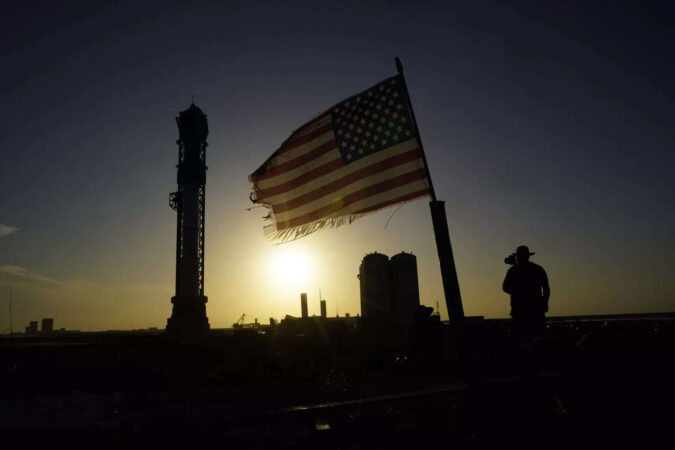It’s the biggest and mightiest rocket ever built, with the lofty goals of ferrying people to the moon and Mars.
Jutting about 120 metres into the South Texas sky, Starship could blast off as early as Monday, with no one aboard.
Musk’s company got the nod from the Federal Aviation Administration on Friday.
A first
It will be the first launch with Starship’s two sections together. Early versions rocketed several miles into the stratosphere a few years back, crashing four times before finally landing upright in 2021.
The towering first-stage rocket booster, dubbed Super Heavy, will soar for the first time.
Supersize
The stainless steel Starship has 33 main engines and 16.7 million pounds of thrust.
All but two of the methane-fueled, first-stage engines ignited during a launch pad test in January — good enough to reach orbit.
Starship could lift as much as 250 tons and accommodate 100 people on a trip to Mars. The six-engine spacecraft accounts for 50 metres of its height.
The game-plan
The test flight should last 90 minutes and fall short of a full orbit of Earth. When Starship reaches the three-minute mark after launch, the booster will be commanded to separate and fall into the Gulf of Mexico.
The spacecraft would continue eastward, passing over the Atlantic, Indian and Pacific oceans before ditching near Hawaii.
Starship is designed to be fully reusable but nothing will be saved from the test flight.
The customers
With a $3 billion NASA contract, Starship aims to land astronauts on the lunar surface as early as 2025 — a first in more than 50 years.
